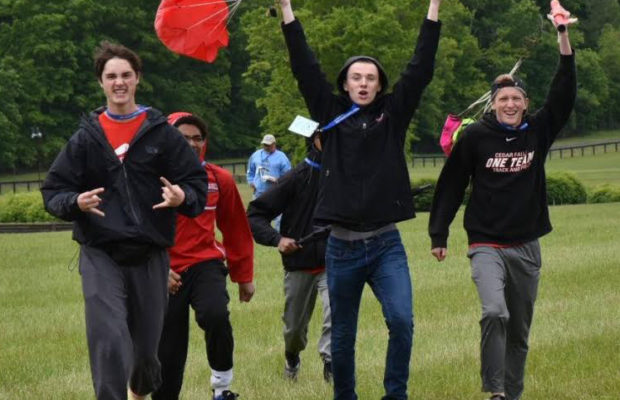Rocket club finishes fifth at Nationals in Washington

By Rachel Schmid
This past weekend the CFHS S.T.A.R.S. made the journey to Washington, D.C., to compete in the Team America Rocketry Challenge (TARC), hosted by the National Association of Rocketry (NAR). Five members along with leader Zeb Nicholson packed up a van and drove 15 hours with their rocket in tow with hopes of ranking nationally for their rocket design, and they returned with a top finish in the country.
Over the rainy weekend, the team had two launches, one against the top 100, and one against the top 25.
“Going into the competition, we had pretty high expectations. At the end of day one, we were in eighth place, and by the second launch, two teams were disqualified and one team didn’t do as well,” member Ryan Ritter said.
Out of 807 teams in the nation, only the top 100 teams were selected to attend and compete in this competition. This is the team’s second year at the national competition, and this year has been quite the improvement. “Going from 70th place last year to fifth place this year has been really amazing. The positive attitude of the team and work ethic has contributed to our success,” Nicholson said.
Another thing that has played a huge part in the team’s success has been the design of the rocket. “Many teams had fancy technology, but that gives their rocket a lot more room for error. We have a very concrete design, so our flights are very consistent, which is key for a national competition,” Nicholson said.
The team took away a trophy for its success with placing fifth place in the nation, along with $7,500 in cash and $500 for a airplane building contest. Teams had 45 minutes to build a small model airplane, and their team had only 15 due to their launch.
“We still took home first place in that challenge thanks to my awesome design.” said group member Will Burken with a smile.
Not only did the team take away fifth place and some cash, they are also invited to work with NASA this upcoming year for a rocket launch in Alabama next fall.
“We have to type up a 75-90-page report of what the purpose of the launch will be, and fly it one mile up in the air. It is a really big deal, and we still have to discuss if we want to take the offer,” Nicholson said.
The National Association of Rocketry has already put out the guidelines for next year’s rocket, and the team is hoping to do even better next year. “We improved so much this year and are hoping to get top three or even first place next year,” Ritter said.









You must be logged in to post a comment Login